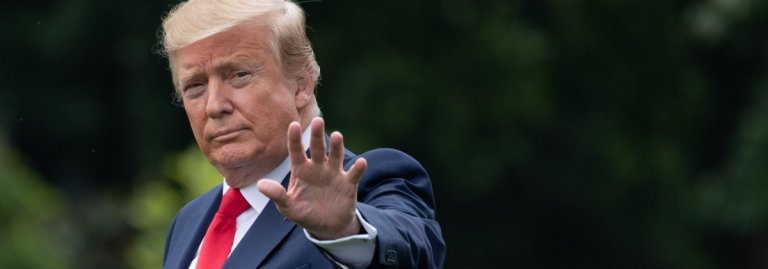
Since taking office, US President Donald Trump has been blamed for many things, including the creation and endorsement of policies that are hostile towards immigrants. In higher education, this is most prominently seen through the travel ban against citizens of several Muslim-majority countries, as well as the tightening of programmes such as the H-1B visa and Optional Practical Training (OPT).
While universities have linked Trump’s policies with falling international recruitment numbers, other analysts disagree; one has argued in Forbes that hefty fee increases – close to US$5,000 since 2012, a figure more than 11 times the increase slapped on Americans – is more likely to be the culprit.
Recently, student recruitment firm IDP has come out to prove that the former is more likely the cause. Times Higher Education reported that IDP data show Donald Trump’s tweets have led to a direct drop in international student interest for US universities.
Trump tweets ‘directly cut foreign student interest in US’https://t.co/OEUrpbKTDD pic.twitter.com/bN258RDpXW
— TimesHigherEducation (@timeshighered) May 20, 2019
“We can see it in real time…you can look at the impact of a tweet overnight,” said IDP Connect chief executive Simon Emmett at the British Council’s Going Global conference in Berlin.
IDP Connect is a division of recruitment and marketing firm IDP Education.
He referred to the direct decline in Indian student interest following tweets about the “travel ban” in 2017.
First coming to effect on January 27 2017, the initial version of the travel ban, often referred to as the Muslim ban, stopped citizens from seven Muslim-majority countries from entering the US. The executive order, which President Donald Trump justified on the grounds of national security, indirectly affected international students who are nationals of these countries, though they were given certain exemptions from the ban.
Fast forward to today, and international students are still spooked from applying to study in the US, even though students from only seven countries are affected by the ban.
International student enrolments for US graduate schools are down, falling 1.8 percent from Fall 2016 to Fall 2017, according to a report released by the Council of Graduate Schools.
THE points to three consecutive years of overall decrease in foreign enrolment, based on a snapshot study of 540 colleges and universities in the US by the Institute of International Education (IIE).

International students are spooked by Trump. Source: Mandel Ngan/AFP
The institutions mostly cited problems with visas (such as delays and denials), followed by the nation’s social and political climate and students choosing to study elsewhere.
IDP’s data supports the last factor. According to Emmett, less than 15 percent of Indian students now consider US universities, compared to December 2015, where it was more than 25 percent. Since then, there has been a steady drop in interest.
After presidential tweets about the travel ban, “we saw the shift straight across from the US to Canada”, he said. Countries like Canada, the UK and Australia command more interest, Emmett explains.
Other reports have come to similar findings. Data from IIE show a double-digit increase in international enrolment in other study abroad destinations during the 2016-17 school year. New Zealand saw the highest jump in international enrolment (34 percent), whereas Canada and Spain saw an 18 percent and 25 percent increase respectively. And while China could hardly be called a top study destination ta decade ago, it’s now aggressively marketing itself to foreign students and succeeding in doing so, seeing an 11 percent increase in enrolment in 2016.
In Fall 2017, US institutions reported a 6.9 percent decline in international student enrolments, continuing the declines first seen in Fall 2016. The drop became less steep the following school year, with only 1.5 percent decrease. However, institutions reported “elevated concerns” over recruitment from Asia for Fall 2019 as a significant number experienced declines in enrolments of new students from China, India, South Korea, Nepal and Vietnam.
Liked this? Then you’ll love…
Is Trump to blame for fewer international students enrolling in the US?
Blame fees, not Trump: Why international students aren’t enrolling in US universities







